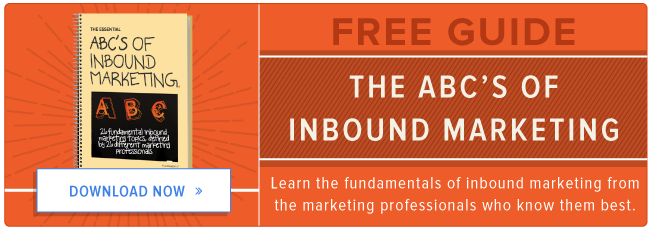 How does that old nursery rhyme go? Mary had a little lamb… No, wait. This one is Little Bo Peep has lost her sheep, and doesn’t know where to find them. Poor Bo Peep. She’s tasked with watching after all those lambs every day, and though they love her, they sometimes stray. But then, you know the nursery rhyme as well as anyone else. Bet you never thought to apply Bo Peep to ecommerce, though.
How does that old nursery rhyme go? Mary had a little lamb… No, wait. This one is Little Bo Peep has lost her sheep, and doesn’t know where to find them. Poor Bo Peep. She’s tasked with watching after all those lambs every day, and though they love her, they sometimes stray. But then, you know the nursery rhyme as well as anyone else. Bet you never thought to apply Bo Peep to ecommerce, though.
Why Little Bo Peep was Wrong about Abandoned Carts
Your ecommerce website is Bo Peep’s sheep pen, to simplify the subject as much as possible. All those buyers performing research on products like yours, adding items to their carts, and signing up for your newsletters or discounts—well, they are your sheep. It’s your job to keep those sheep corralled until they… Well, the comparison ends there. What’s next is no nursery rhyme.
What Is a Pre-Transactional Contact?
We covered pre-transactional contacts in depth in a previous article. However, a pre-transactional contact can also be someone who has just researched your product and perhaps even added it to his or her shopping cart. You may think the sale is confirmed at that point, but you’d be wrong.
Bo Peep’s tale says if we “leave them alone, they’ll come home.” Actual sheep farmers will tell you a different story. Despite the common use of sheep as a euphemism for blind followers, many times you must find go those sheep and bring them back yourself. In ancient times, the shepherd even broke the sheep’s leg to keep it from wandering away again. That’s a measure too extreme, but you do learn one thing: Those sheep aren’t going to stay in one place without your guidance.
How Do I Hook Buyers?
Two major components of your ecommerce site are needed to hook buyers right away. The first is intimate knowledge of your products, which will show through your product descriptions, blogs, and other marketing copy. The second is security. Customers need to know they’re protected in two separate ways: guarantees for your products and privacy of their personal information. With these two pieces of the puzzle in place, your potential buyers have a greater reason to continue perusing your site.
This study suggests 59% of buyers are influenced by customer reviews of products and services, while 42% consider Q&A content important before buying. Adding this information to your ecommerce site helps those buyers with their research process while also keeping them right there where you want them.
The Blog Hook
Your ecommerce blog gives you the chance to share new information at a higher rate of speed than your landing pages and product pages. When potential customers need more knowledge about a product or service, your blog can provide the answers they need. Consider the possibilities of sharing the same or similar information in daily blogs without overwhelming the reader. Wouldn’t you rather they research your products right there on your page instead of going somewhere else?
As an added bonus, your pages will be searchable on Google and other search engines due to fresh content and an abundance of keywords, which means even more potential customers can find you and learn what they need to know about your products before buying.
The CTA Hook
A call-to-action is designed to lead pre-transactional contacts toward conversion. Not everyone is ready to make a purchase, however. If you only include one call-to-action, you could miss out on a chance to nurture these prospects until they’re ready to buy. In addition to your primary, buy-now call-to-action, include a secondary CTA that offers more information in the form of whitepapers, ebooks, checklists, user guides, or anything else that might convince a customer to buy.
The Landing Page Hook
Your landing pages could be your most powerful tools when herding potential buyers. While they may not be ready to make a purchase, they could certainly be willing to seek out more information. Landing pages give you the chance to offer that information after pre-transactional contacts click on primary or secondary CTAs.
You have a chance to collect information on your landing pages that will help your buyers make more informed decisions. Ask your prospects their age ranges, their company names, where they live, what company they work for, what their job titles are. Ask them anything that might help you develop a better picture of your target audience. With that knowledge, you can build more complete buyer personas, write targeted product descriptions, provide better information in your blogs, and tailor your social media and email marketing for the best possible results.
What Happens When They Stray?
Studies show a cart abandonment rate of over 67%. That’s a lot of pre-transactional contacts wandering away from the flock. If your potential buyers leave the fold after requesting more information, adding items to their cart, or signing up for a newsletter, you can bring them back. We don’t suggest the ancient way of breaking their legs to keep them from running away again. There are more subtle ways to keep your pre-transactional contacts in the fold.
The Social Media Hook
Though studies show 49% of e-buyers don’t rely on social media sites to gather research, this infographic shows 71% are more likely to make a purchase if they do receive a referral on social media. Is this contradictory information? Not at all. This means buyers won’t turn to social media for information, but when they do see positive reviews of your products or services on Twitter or Facebook, that could just be the straw that breaks the camel’s back (or insert other punchy metaphor here.)
With the Social Inbox tool, you can make use of social media to hunt down your sheep. When someone adds your products to their cart and then abandons to get more information from Twitter or Facebook, you can be right there handing out the information they need to make a decision.
The Email Campaign Hook
When someone abandons their shopping cart after entering contact information, you can seek them out through targeted emails. Remember, buyers want to know they’re important, they’re secure, they’re getting a good deal, and -- most importantly -- that they're making the right decision. Your emails should be created to inspire these feelings, starting with a personalized message offering assistance with the buyer’s shopping experience. Provide a safe shopping environment where they can feel confident when entering financial information. Finally, offer discounts or package deals to those who rejoin your flock.
Once you’ve made the sale, letting your buyers wander off is easy. Don’t make that mistake and miss out on future sales. Even your most dedicated customers should receive occasional email updates and newsletters offering specials for loyal customers. Isn’t that a much better way to inspire loyalty than breaking their legs? We think so, too.
In a Fairytale World
In a fairytale they would always come back on their own, but we don't live in a fairytale world. You can, however, do something about the pre-transactional contacts that don’t convert immediately. Patience, perseverance, and special attention to detail are all you need to make the sale. Some great automated tools can help along the way, too.


Image credit: Johan Hansson

